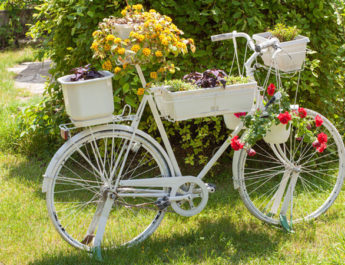Newstricky| The scale of the climate change crisis is daunting, and it can make people feel like they are powerless to do anything about it. While big changes are needed at an international and societal level, we can make a difference in the way we lead our everyday lives. The difficulty for many people is that it can be difficult to know where to begin, and the information can be quite overwhelming. The key, of course, is to change one area of your life at a time, and once that part feels routine, to adapt another area of your life. To get you started, here are some tips on how to live a greener lifestyle.
Table of Contents
Be smarter about plastic and household chemicals
Plastics and toxic chemicals are a part of our everyday lives, but they are having a huge impact on the natural world, especially our lakes, rivers, oceans, and marine life. Our personal hygiene products, wipes, cleaning chemicals, and detergents end up in the water and literally poison our water. Choose products that are made using natural ingredients and do not contain plastic particles or toxic chemicals.
Buy local, seasonal produce and reduce waste
Buying fresh seasonal food from local producers avoids the need for food to be flown in from all over the world and stored, all of which impacts the environment. If you are shopping at a supermarket, try to choose foods that have been supplied by relatively local farmers. You might even want to start growing your own fruit and vegetables.
We are all guilty of wasting food either through poor planning, excessive shopping, or being too busy to eat foods before their expiration date, and this means lots of food is sent to landfill unnecessarily. When you do have waste food, consider creating a compost heap to produce your own fertilizer for plants. Visit self.com for information on composting at home.
Recycle as much as you can
Many of us do not realize just how much of our household waste can now be recycled if we know where to send it. Do some research into your local recycling plants and services before you throw something in the garbage. It is also important to check the packaging of what you are buying to ensure you can recycle it afterward.
Use less electricity
Most of the electricity that we use at home has been generated through the burning of fossil fuels, causing carbon to be released into the atmosphere. If we can use less electricity, we can reduce the demand and, therefore, the carbon produced. Even better, if we buy solar panels for home we can generate our own clean electricity for free with no emissions at all.
Drive less
Over half of the journeys that we take in our care are just a few miles long, and vehicle emissions are another big climate change culprit. Think about your journeys and whether you could try getting from A to B in a different way. For example, you may be able to walk or cycle, or take public transport for longer journeys. Of course, if you have the money, an electric car produces zero tailpipe emissions and is often cheaper to run and maintain than a petrol or diesel car.
Eat less meat
The meat industry is a big contributing factor in the climate change crisis. Supplying our stores with enough meat to keep up with demand has led to deforestation, increased production of greenhouse gases, the destruction of wildlife habitats, and forest fires. There is an increasing awareness of the problems caused by eating meat in large quantities, which has led to an increase in plant-based and vegan diets. Even if you cannot imagine going meat-free all the time, it may be worth considering reducing your meat consumption. Take a look at The Meat Lover’s Guide to Eating Less Meat for some pointers.
Also read: Foods That Will Improve Your Scalp Health




